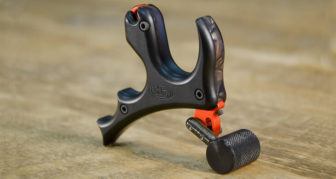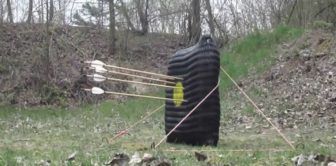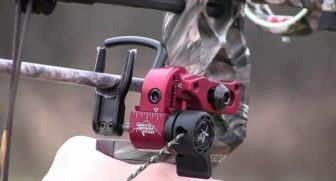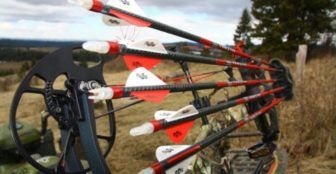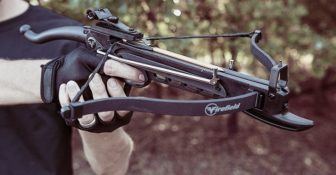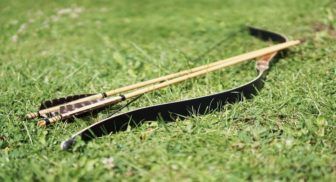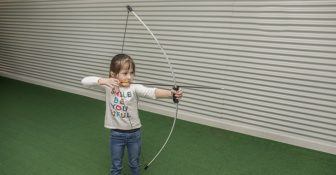Recurve Bow Draw Weight – What Should You Know?
Photo: blog.3balls.com
In archery, one of the most often asked beginner questions is the issue of bow draw weight. After seeing an expert pulling a 50-lb bow and a child pulling a 10-lb bow, any beginner naturally wonders where he or she fits in.
The truth is, there's much more to draw weight than meets the eye. It's not just about how big you are and how much you can pull, it's more about becoming a better archer.
Following is a closer look at recurve bow draw weights. You'll find all the information that you'll need to make the right choice and pick the best recurve bow for your purposes.
What is Recurve Bow Draw Weight?
A bow's draw weight is the amount of force that you'll need to apply to fully and correctly draw the bow . Given that each archer is on a different skill level and different in size, the ideal draw length for an ideal shot varies from archer to archer.
The size and type of material used in making its limbs determine the recurve bow strength. Stiffer and larger limbs produce higher draw weights.
You'll find the draw weight of a recurve bow usually marked on its lower limb and specified in pounds at a specific draw length. As an example, a typical draw weight could read 25 lbs @ 26 inches.
This means that the weight acting on the string when it's drawn to 26 inches is 25 lbs. As you would expect, drawing the string further than 26 inches will increase the weight, while under-drawing it would decrease the draw weight.
Why You Should Choose the Right Draw Weight
Photo: realtree.com
Like most recurve bow owners, your first bow will probably not be your last, so there should be no rush to buy the most powerful or impressive recurve bow you can find.
You'll be better served by choosing the right draw weight for the following reasons.
1. Your Muscles. As with bodybuilders, your muscles need time to develop. This means that a 40-lb bow that you're finding difficult to draw and hold today, will soon become easy after a few months.
The best way though is to start with a lighter bow and slowly increase the draw weight. Also, some take-down recurve bow manufacturers offer different limb sizes for the same riser, making it easier and cheaper to graduate from a lighter to a stronger bow.
2. Archery Form. Archery form refers to the way you stand, grip your bow, and execute your arrow shots. It's what defines your skills in archery.
You'll find it more difficult to develop proper archery form with a higher-poundage bow, but with a less powerful bow, you'll have a better chance to focus on developing your form first.
3. Hunting Regulation. If you'll be going hunting, then check the regulations in your area, because most states have a minimum hunting draw weight of around 40 lbs.
Recurve Bow Draw Weight Chart
The following chart is just a guide to follow as a beginner. Starting out, it's better to choose from a lower draw range in this chart, than a higher one. Then, after you've shot a couple hundred arrows, you'll personally know what's best for you.
|
Archer Group |
Body Weight Range |
Frame Size |
Recommended Draw Weight |
|---|---|---|---|
|
Kids |
50 - 70 lbs |
Small |
10 - 15 lbs |
|
Kids |
70 - 100 lbs |
Large |
15 - 25 lbs |
|
Women |
100 - 130 lbs |
Small |
25 - 35 lbs |
|
Women |
130 - 160 lbs |
Medium |
25 - 35 lbs |
|
Women |
160+ lbs |
Large |
30 - 45 lbs |
|
Men |
120 - 150 lbs |
Small |
30 - 45 lbs |
|
Men |
150 - 180 lbs |
Medium |
40 - 55 lbs |
|
Men |
180+ lbs |
Large |
45 - 60 lbs |
Recurve Bow Draw Weight for Target Shooting
Many beginners wrongly assume that a more powerful bow will produce better target shooting results. The truth is, a more powerful bow needs a heavier arrow, and this reduces many of the gains from the more draw weight.
You can target shoot with any draw weight you like, but when it comes to competitions and other disciplines, regulations are usually put in place.
Bows ranging from 15 to 70 lbs are all acceptable, but the most common draw weights you'll find are 15 to 35 lbs. Beginning with a bow in this weight class and in-line with the table above is a step in the right direction to becoming a good archer.
While male Olympic recurve archers easily draw 45-55 lbs, you should remember that they've spent years practicing and that their muscles have adapted to the sport. With a little patience though, you too will reach that stage someday.
Recurve Bow Draw Weight for Hunting
If you would like to hunt with your recurve bow , then things become a little complicated. This comes as a result of different jurisdictions that passed minimum bow weight laws, to cut down on animal cruelty.
With a low draw weight bow, most arrows will not gain enough momentum to properly pierce the game's hide and penetrate the flesh deeply.
This results in lots of animals getting only partially wounded and left in the wild to suffer and die slow, painful deaths. An ethical bowhunter, therefore, always aims for a quick kill.
For lots of popular North American game, including deer, cougar, and turkey, you'll need a minimum draw weight of 40 lbs to hunt them legally in most states.
For larger game animals like the grizzly bear and bison, you'll need the highest recurve bow draw weight you can get, beginning from 55 lbs upwards.
Conclusion
Coming to the end of this recurve bow draw weight guide, you should hopefully have made up your mind on the right draw weight.
Remember that the weight recommendations above are just that: recommendations.
You are always free to decide and do whatever you want, but following advice often helps you to gain from the experience of those who were once where you are, now.
